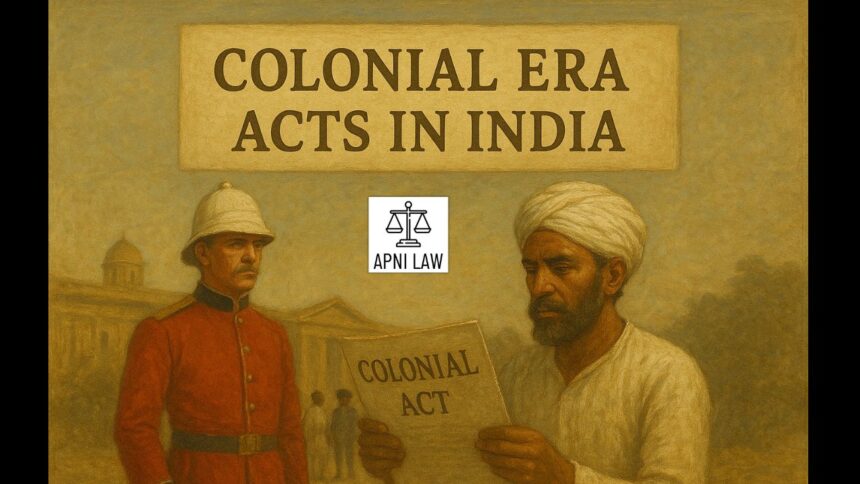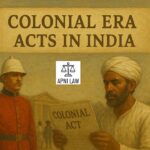Introduction
The Indian Councils Act 1909, known as the Morley-Minto Reforms, marked a turning point in India’s constitutional history. For the first time, Indians gained limited entry into legislative councils, yet the Act also introduced communal electorates, sowing seeds of division that shaped Indian politics for decades. While the reforms aimed to widen participation, they also revealed the British strategy of balancing concessions with control. Understanding this Act is crucial to grasp how colonial policies influenced India’s struggle for self-government.
Background of the Reforms
By the early 20th century, pressure for political reform had grown. The Indian National Congress demanded greater representation in law-making, while Muslim leaders began voicing concerns about their role in governance. To address these demands, the Secretary of State for India, Lord Morley, and the Viceroy of India, Lord Minto, worked together to draft reforms. Their efforts resulted in the Indian Councils Act of 1909, which Parliament passed with promises of political inclusion but hidden strategies of division.
Provisions of the Act
The Act expanded the Imperial Legislative Council from 16 to 60 members and enlarged provincial councils. Indians were allowed to join these councils for the first time, though their numbers remained limited and elections were indirect. Separate electorates for Muslims became the most controversial provision. This system allowed Muslims to elect their representatives independently, a move that deepened religious lines in politics. Although the reforms gave Indians a role in governance, real power remained with the British.
Impact on Indian Politics
The reforms created excitement among some leaders because Indians could now influence laws, even if in a restricted way. Gopal Krishna Gokhale welcomed the reforms as a step forward, while Bal Gangadhar Tilak dismissed them as inadequate. The introduction of communal electorates, however, had far-reaching consequences. It encouraged identity-based politics and gave the Muslim League a strong political base. Instead of uniting Indians against colonialism, the reforms widened the gap between communities, a divide the British later exploited through their “divide and rule” policy.
Criticism of the Act
Critics argued that the reforms were cosmetic. Indians could debate in councils but had little power to pass laws or control finances. The British Governor-General and provincial Governors retained veto powers, ensuring colonial supremacy. The communal electorates faced sharp opposition from Congress leaders, who warned that separate representation would harm national unity. These criticisms proved accurate, as the provision later became one of the roots of communal politics in India.
Long-Term Significance
Despite its flaws, the Act of 1909 became an important stage in India’s constitutional journey. It introduced elections into Indian politics, however limited, and familiarized Indian leaders with legislative procedures. At the same time, it institutionalized religious divisions by granting separate electorates. This dual legacy made the Act both a milestone and a warning for the future. Later reforms, such as the Montagu-Chelmsford Reforms of 1919, built on the same pattern of partial inclusion while maintaining colonial control.
Questions and Answers
Q1. Why is the Indian Councils Act 1909 called the Morley-Minto Reforms?
It is called the Morley-Minto Reforms because Lord Morley, the Secretary of State for India, and Lord Minto, the Viceroy of India, introduced the Act together.
Q2. What was the most controversial feature of the 1909 Act?
The most controversial feature was the introduction of communal electorates, which allowed Muslims to elect their representatives separately.
Q3. How did the 1909 Act affect Indian politics?
The Act gave Indians a limited role in law-making but also fueled communal politics. It created opportunities for debate but divided communities, shaping future challenges in India’s freedom struggle.
Conclusion
The Indian Councils Act 1909, or Morley-Minto Reforms, left behind a mixed legacy. On one hand, it brought Indians into the councils and introduced the idea of elections. On the other, it divided communities through communal electorates and kept real power in British hands. The Act highlighted the British strategy of offering reforms that appeared progressive but were designed to maintain control. For students of constitutional history, it stands as both a step forward in India’s democratic journey and a reminder of how colonial policies deliberately sowed division.
For any specific query call at +91 – 8569843472







